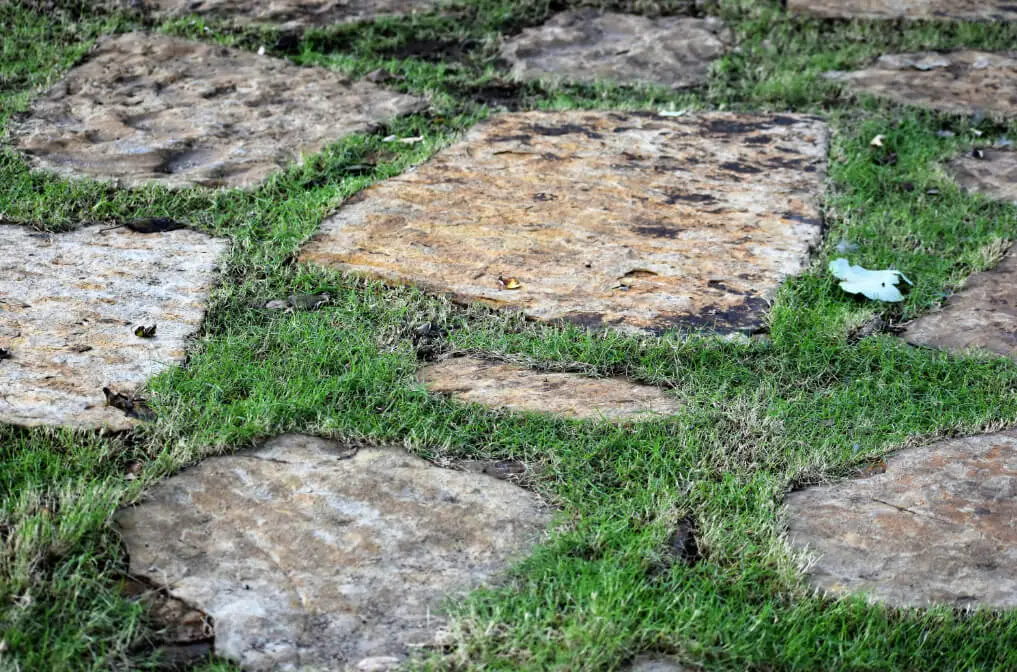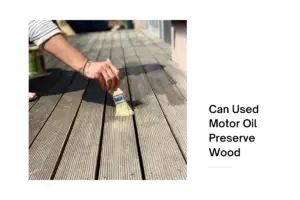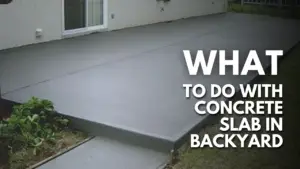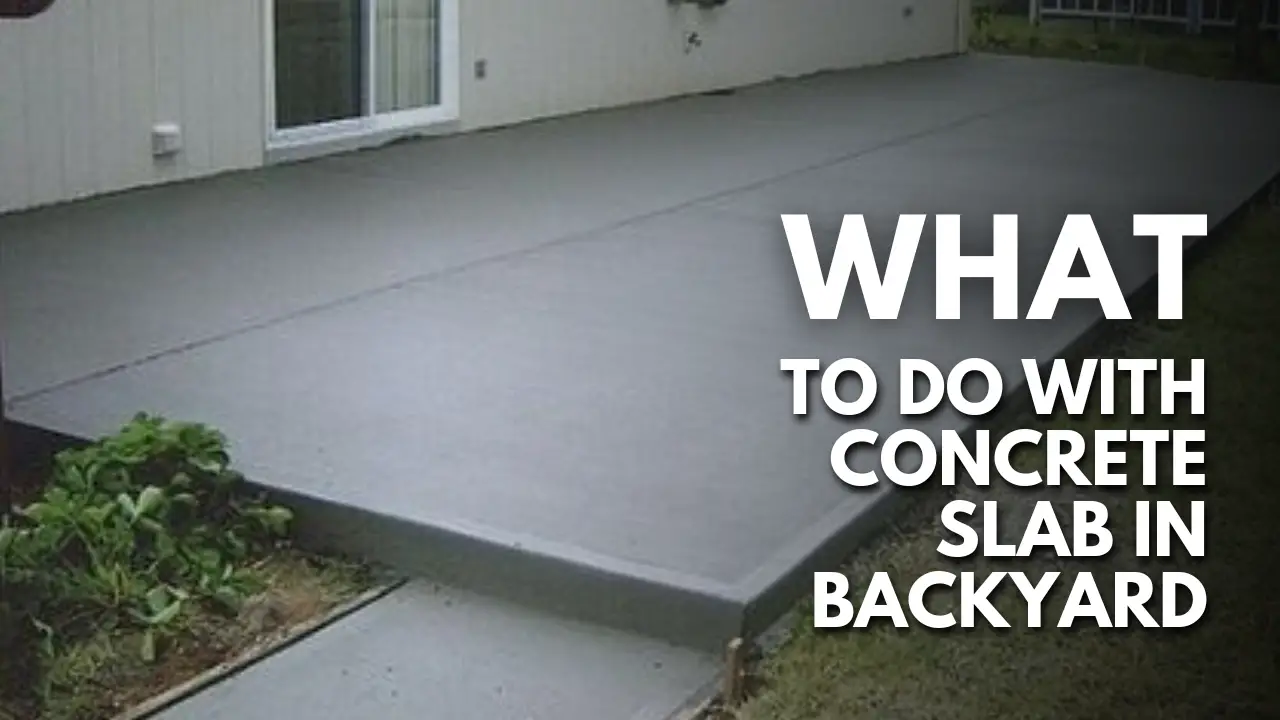Pavers bring many benefits and ambiance beauty to our surroundings, being either pool deck, walkways, driveways, or otherwise. As a result, you would wonder why you should replace your pavers with grass. You should understand that your decision to replace the pavers could be because the pavers were not installed properly, have become uneven or just look dirty.
It may also be due to uncontrollable weeds and other external factors. The pavers that sink due to poorly made paver beds can also be a reason. Before you replace your pavers with grass, you’ll need to remove the paver (irrespective of type). Afterward, get rid of the gravelly material that was underneath it.
To go from pavers to grass, fill the spaces with topsoil because grasses will not grow on the gravelly material (petroleum-based products). After filling the place that the friable material occupied with topsoil, rake the soil to aerate and incorporate the topsoil with the base layer, lay the turf or spray the area with a grass seed mixture that can be applied easily with a hose or sprayer.
A few options to grow grass after replacing the pavers include a grass seed mat that allows you to cut a piece to fit pavers profile. Another option is to use a grass seed sprayer that attaches to your garden hose and allows you to spray the pavers void and overspray a bit to help it blend in better once the grass takes hold and starts growing.
Can You Remove Pavers And Plant Grass?
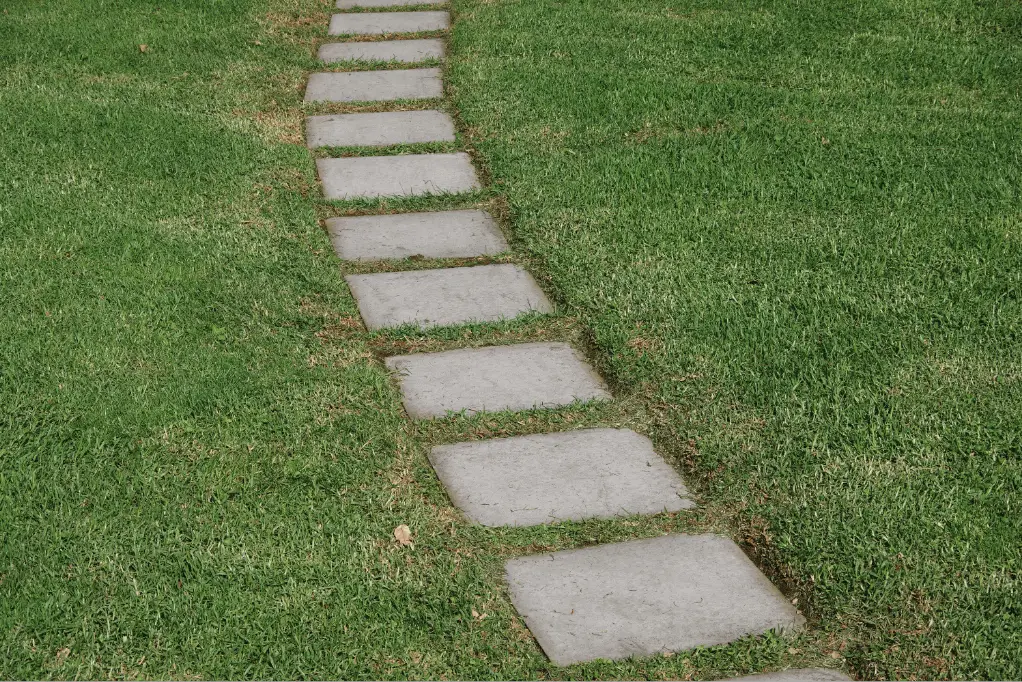
By gathering a few key tools, removing pavers should be an easy project.
Some tools and equipment recommended are:
Here’s what to do.
- First, remove the pavers using a pry bar or a sturdy shovel
- Using a pry bar, remove the paving stone (in this case) by placing the edges of the pry bar on each side of the stone and carefully lifting the paver.
- Consider using a wheel barrow or utility cart to help in moving the pavers to a waste disposal bin or to a new location in your yard.
- When you finish removing the paver(s) using the crow bar, remove the gravelly material as earlier said. After that, til the ground to loosen the top soil before filling the ground with new topsoil and prepare it adequately.
- Then plant the grasses through grass seeds grass mat, grass sprayer, or transplanted grasses.
How Do You Go From Pavers To Grass?
Some important keys to remember when replacing pavers with grass are to thoroughly removes any gravel or material that is below the pavers. These base layers will are made to deter weeds from growing and may impede the grass from growing. A lot of materials such as concrete and bedding sand are put in use while installing pavers.
Well, I’ll ideally tell you how to go from pavers to grass effectively.
- First, remove the pavers using either a pry bar or shovel, as earlier discussed.
- Then, prepare the ground by spreading a base layer of about 0.5 – 1 Inch of and fine grit for drainage and level it up. Though this is optional, you could choose to do it or not.
- Spread four inches of good soil like topsoil mixed in around quarter a pound per square feet 16-16-0, 16-16-8 fertilizer, or any lawn fertilizer that would work perfectly. After that, level it again properly with a rake.
- Broadcasting will then follow because you’re using grass seeds. Broadcast to spread the grass seeds on the soil through a walk behind as you’re doing it, to distribute the grass seeds effectively. Shortly after, rake the soil around again but not too much enough to disturb my previous work.
- If it’s not rainy, or it’s a dry period, spread straw or hay over the grass seeds you’ve propagated to give it a little layer for humidity. But if rain is due, there’ll be no need.
- Also, run a sprinkler in the morning and evening for around 10-30 minutes each. Running this sprinkler will largely depend on the climate and size of your lawn. Note that the ground must not show pools or puddles of water.
- Once you see it’s saturated, stop sprinkling, or the overwatering may make the germination a bit patchy.
- Ensure not to walk on it during the broadcasting and further germination until you have sprouted green shoots showing around an inch long. From there, you can cut it and use it for transplanting, depending on what you want. You could also allow it to continue sprouting.
- Be sure not to use a lawn sprinkler for too long. Some people even put it on all day. Using a hose attachment to aim it up and barely spend ten minutes in the morning will be better because it will be less likely to overwater.
- In drought, you’ll need the sprinkler to raise humidity. Like overwatering, under watering will screw up the germination too and get you a patchy lawn.
How Do I Remove Concrete Pavers?
Well, removing concrete pavers could be tedious, especially if you’re alone because they’re weighty.
You can remove your concrete pavers by using a utility pry bar, which I recommend from Amazon. Make sure to use heavy duty gloves to protect your hands and eye protection while removing the pavers.
Sometimes, you merely pick them up. But if the concrete pavers are too heavy, you can break them with a sledgehammer, then pick the pieces up.

